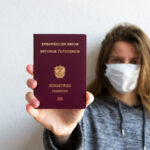Every year, millions of people embark on journeys to various destinations across the globe. Regrettably, not all flights can be completed in a single, uninterrupted journey; often, travelers must make brief stops in different countries en route to their final destination. To facilitate this process, most nations issue transit visas, which allow travelers to briefly transit through their territory before continuing their journey.
What Is a Transit Visa?
A transit visa is a travel document that grants you permission to pass through another country on your way to your final destination. For instance, if you are traveling from India to the United States, but your flight itinerary includes a stopover in the Schengen Zone before proceeding to the U.S., you would require a transit visa for the Schengen Area.
These visas are typically short-term and not mandatory for all travelers. Therefore, it is essential to contact the embassy or consulate of the transit country before your trip to determine whether you need a transit visa.
Transit Visa by Country
You can apply for a transit visa for several countries, depending on your destination:
- Australia
- Indonesia
- Japan
- Malaysia
- Singapore
- Thailand
- Turkey
- United Kingdom
- United States
- United Arab Emirates
- Schengen Transit Visa (valid for all countries in the Schengen area):
- Germany
- Netherlands
- Italy
- Spain
- France
Transit Visa Fees by Country
The fees for transit visas vary by country:
- Australia: Free of charge
- Canada: Free of charge
- Japan: JPY 700
- New Zealand: NZD 12
- Schengen transit visa (valid for all countries in the Schengen area): EUR 80
- Singapore: SGD 40
- United Kingdom: GBP 35-64
- United States: USD 160
What Is the Transit Zone?
The transit zone is a designated area within an international airport where travelers can wait until their connecting flight to their final destination is ready for boarding. In the transit zone, passengers can remain within the airport without the need for immigration processing, as long as they do not exit the airport.
Do I Need a Transit Visa If I Leave the Transit Zone?
A transit visa is necessary if you intend to leave the transit area. However, specific nationals, such as those from Iran, Syria, Guinea, among others, may require a transit visa regardless of whether they leave the transit area or not.
Difference Between Transit and Transfer Passengers
Distinctions exist between transit and transfer passengers:
- A transit passenger continues their journey on the same aircraft.
- A transfer passenger continues their flight on a different aircraft or airline. Typically, you must check in again at the airport.
Importantly, it is advisable to check with your airline to determine whether you require a visa during your flight transfer.
Difference Between Direct, Connecting, and Non-Stop Flights
There is a significant disparity between direct, connecting, and non-stop flights:
- A direct flight travels from point A to point B without changing flight numbers, but it may make intermediate stops to pick up new passengers.
- A connecting flight follows a route from point A to point B with an intermediate stop at point C (in such cases, a transit visa is necessary).
- A non-stop flight travels directly from point A to point B without stopping or transiting at point C.
Transit Visa Documents Required
To apply for a transit visa, you will typically need the following documents:
- Completed airport transit visa application form.
- Valid passport with at least six months of validity and blank pages.
- Passport-sized photos.
- Travel health insurance.
- A travel ticket to your destination country.
- Visa for your destination country (if required).
- Proof of financial capability to support your trip.
How to Apply for a Transit Visa?
Here are the steps to obtain a transit visa:
Check If You Need an Airport Visa
Before applying for an airport visa, confirm whether you require one. This depends on your nationality, the purpose of your visit, and the country to which you will be transiting. It is advisable to contact both the airline and the embassy or consulate of your destination country to verify visa requirements.
Prepare Your Documents
If a transit visa is necessary, assemble and prepare your documents. The specific documents required may vary based on the transit country, but it is essential to ensure your documents are properly translated and authenticated with an apostille stamp or certification from an official office.
Locate a Visa Application Center
You must identify a representative of the transit country, such as an embassy or consulate, or a visa application center. Once you have located the visa office, schedule an appointment for your visa interview and submit your application.
Submit Your Application
Finally, submit your visa application and complete the required visa interview. Keep in mind that you must apply for a transit visa before your departure; it is not possible to obtain one at the airport.
What is Transit Visa Validity?
A transit visa typically has a validity of 24 hours, although the duration may vary depending on the embassy and the specific transit country. It is essential to verify the validity period of your visa and ensure that you complete your transit within this timeframe to avoid legal consequences.
Can I Use My Transit Visa More than Once?
Transit visas are generally single-entry visas, which means they become invalid once used to transit to your destination country. If you need to transit again, you must reapply for a new transit visa. Keep in mind that if you plan to spend more time in your transit country than your visa allows, you should apply for a tourist visa.
How Much Does a Transit Visa Cost?
The cost of a transit visa can range from $25 to $100, depending on the country. Some countries do not charge an application fee for transit visas.
Transit Visa Exemptions
Certain individuals are exempt from applying for a transit visa under the following conditions:
- They already possess a valid visa for the country through which they will transit.
- They hold a valid diplomatic passport.
- Their country has a bilateral agreement with the transit country.
- They do not intend to leave the transit zone (applies to nationals of specific countries).
- Their transit period is less than 24 hours (though this may not apply in all countries).
Conclusion
Understanding the intricacies of transit visas is crucial for smooth international travel. By following the steps to obtain a transit visa, travelers can ensure they meet the necessary requirements and enjoy a hassle-free transit experience. It is essential to check visa requirements well in advance, prepare the required documents, and be aware of the specific regulations of the transit country. With proper planning and knowledge, travelers can navigate the complexities of transit visas and enjoy a seamless journey to their final destination.





















